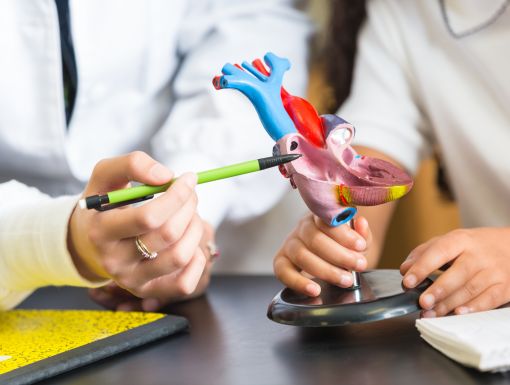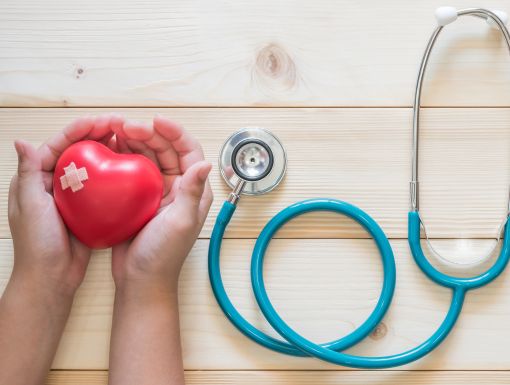
Broken Heart Syndrome: Important Signs and Symptoms to Know About
Have you ever had your heart broken? Most of us know the pain that comes with a heartbreak. In the medical world, there’s a real condition called broken heart syndrome. Broken heart syndrome is a condition that is brought on by extreme emotion or by stressful situations. The surge of stress can lead to a weakening of the muscles of the heart and can cause a part of the heart to temporarily swell. This means the heart is not able to pump well.
What causes a broken heart syndrome?
It is hard to understand the exact cause of broken heart syndrome, but as the name suggests, broken heart syndrome has been associated with intense emotional or physical stress. A few examples of these stressors are:
- Emotional stressors: losing a loved one or other sudden loss, losing your job, car accident, grief, intense fear, extreme anger or good news (such as a surprise party).
- Physical stressors: major surgery or a broken bone, low blood sugar, high fever, low blood sugar, severe pain or asthma attacks.
Broken heart syndrome is also known as stress cardiomyopathy. The body’s normal response under any stressful situation is to release a lot of different hormones to help the heartbeat faster and stronger. Some have suggested this can cause the weakening of the muscles of the heart, resulting in the broken heart syndrome.
What happens to the heart muscles in broken heart syndrome?
The weakening of the heart muscle can cause a part of the heart to swell like a balloon. With every heartbeat, the parts that are weak are unable to contract. This gives it a unique appearance on echocardiography (ultrasound of the heart), like that of a balloon. This resembles an octopus trap (round wide base, narrow neck), called tako-tsubo in Japanese. For this reason, broken heart syndrome is also called takotsubo cardiomyopathy, a term coined in Japan.
What are the symptoms of broken heart syndrome?
Symptoms of broken heart syndrome may mimic those of a heart attack because of chest pain and shortness of breath. However, in broken heart syndrome you do not have a blocked artery or permanent heart damage and can typically make a full recovery.
The symptoms of broken heart syndrome can begin within minutes or hours of the stressful event. The most common symptoms may include the following:
- Chest pain: this can be sudden and severe. This is a main symptom.
- Shortness of breath: with regular activity or especially while lying flat, waking up in the middle of the night gasping for air. In severe cases, some may only get sleep when propped up on multiple pillows or sitting up. This is also a main symptom.
- Fainting or passing out: This can be due to irregular heartbeats, which are not effective in pumping blood.
- Irregular heartbeats, also known as arrhythmias.
- Low blood pressure, also known as hypertension.
- Heart palpitations: the feeling like your hear is racing, pounding or missing heartbeats. You can feel this in your neck, chest or throat.
Symptoms may occur anywhere from a few minutes to a few hours after a stressful situation. In severe cases, some patients can go into a shock due to inadequate pumping function of the heart.
How is broken heart syndrome diagnosed?
Broken heart syndrome is typically first diagnosed when a patient enters an emergency room or a hospital, because they symptoms mimic a heart attack. To begin, your healthcare provider will examine you, ask you questions about your symptoms and review your medical history. They will also ask if you have encountered any major stressors in your life recently. Those who have broken heart syndrome do not typically have heart disease symptoms before being diagnosed.
A few test your healthcare provider will use to help diagnose broken heart syndrome include:
- A blood test to look for higher levels of cardiac enzymes in the blood.
- An electrocardiogram, also known as an EKG, to measure the electrical activity of the heart.
- A coronary angiogram test, which checks for blockages in the heart arteries. This test is completed to rule out a heart attack since those with broken heart syndrome do not have any blockages.
- The coronary angiogram may be done before other tests to make sure blockages are not present.
- An echocardiogram, also known as an echo, is an ultrasound of the heart. This test is used to see if the heart has an unusual shape, or the heart is enlarged since these changes may be a sign of broken heart syndrome.
- A heart MRI is used to gather a detailed picture of your heart. A heart MRI can show how well your heart is working and how well your blood is moving.
How is broken heart syndrome managed?
While there is no cure for broken heart syndrome, it typically resolves within a couple of months, with recovery of the heart function. If fluid congestion is present in the lungs, a “water pill” (Furosemide) may be given to help with the breathing. Other heart failure medications may be given to help with the recovery of the weakened heart muscles, such as beta-blockers and angiotensin-converting enzyme inhibitor.
Broken heart syndrome is a temporary condition for most people. If you have been diagnosed with broken heart syndrome, you will recover in a few days to weeks without any long-term heart problems. The best thing you can do is to take care of yourself, take your medication and see your provider as they recommend!
Emergency
care should always be sought immediately for sudden onset chest pain or
worsening shortness of breath.



